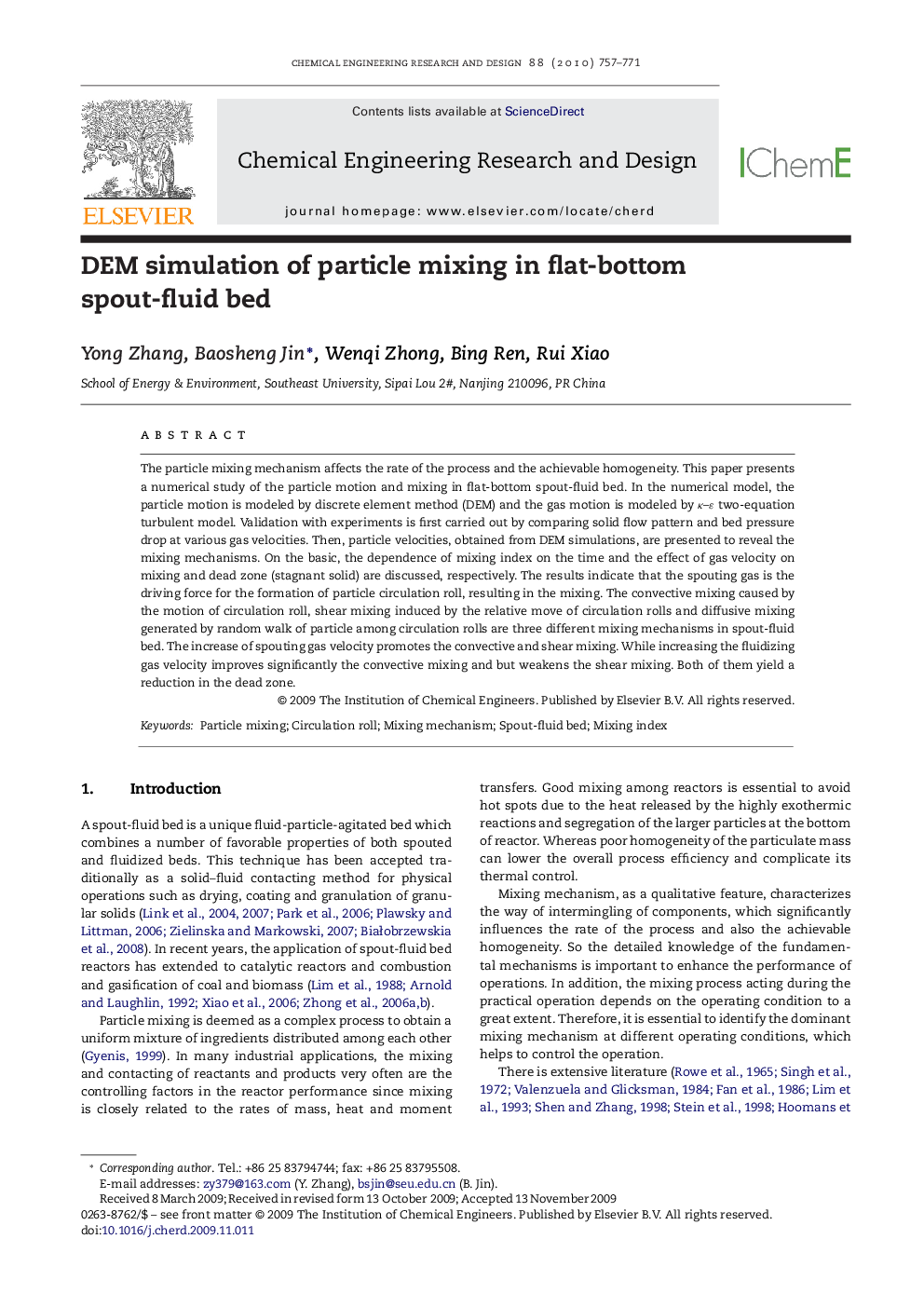| Article ID | Journal | Published Year | Pages | File Type |
|---|---|---|---|---|
| 622276 | Chemical Engineering Research and Design | 2010 | 15 Pages |
The particle mixing mechanism affects the rate of the process and the achievable homogeneity. This paper presents a numerical study of the particle motion and mixing in flat-bottom spout-fluid bed. In the numerical model, the particle motion is modeled by discrete element method (DEM) and the gas motion is modeled by κ–ɛ two-equation turbulent model. Validation with experiments is first carried out by comparing solid flow pattern and bed pressure drop at various gas velocities. Then, particle velocities, obtained from DEM simulations, are presented to reveal the mixing mechanisms. On the basic, the dependence of mixing index on the time and the effect of gas velocity on mixing and dead zone (stagnant solid) are discussed, respectively. The results indicate that the spouting gas is the driving force for the formation of particle circulation roll, resulting in the mixing. The convective mixing caused by the motion of circulation roll, shear mixing induced by the relative move of circulation rolls and diffusive mixing generated by random walk of particle among circulation rolls are three different mixing mechanisms in spout-fluid bed. The increase of spouting gas velocity promotes the convective and shear mixing. While increasing the fluidizing gas velocity improves significantly the convective mixing and but weakens the shear mixing. Both of them yield a reduction in the dead zone.
